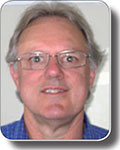Understanding the critical success factors determining prospectivity—Otway Basin, Victoria
Geoffrey O’Brien A , Chris Boreham B , Hywel Thomas C and Peter Tingate AA GeoScience Victoria
B Geoscience Australia
C Nexus Energy
The APPEA Journal 49(1) 129-170 https://doi.org/10.1071/AJ08009
Published: 2009
Abstract
The critical success factors that control hydrocarbon prospectivity in the Otway Basin have been investigated using petroleum systems approaches. It have revealed that greater than 99% of the discovered hydrocarbons in the Victorian Otway Basin have been sourced from Austral 2 (Albian-Aptian) source rocks and that these Austral 2-sourced hydrocarbon accumulations either directly overlie—or are located within 3,000 m—of actively generating Austral 2 source rock kitchens. Importantly, the zones of greatest prospectivity are located where these source rocks have been actively generating and expelling hydrocarbons throughout the Late Paleogene, primarily as a result of sediment loading associated with progradation of the Heytesbury shelfal carbonates. This peak generation window occurs at an average depth of approximately 2,500–3,500 m sub-mud across much of the basin, which has allowed prospective hydrocarbon fairways to be mapped out, thereby highlighting areas of greatest prospectivity. The close spatial proximity of the actively generating source rocks to the accumulations is due to several factors, which include overall poor fault seal in the basin (success cases occur where charge rate exceeds leakage rate) and relatively complex and tortuous migration fairways (which means that large volumes of hydrocarbons are only focussed and migrate for relatively short distances).
In areas within which the Austral 2 system comprises the sole hydrocarbon charge—such as across the inner Mussel Platform—the reservoired gas compositions are typically very dry. In contrast, the gas compositions in accumulations sited along or immediately inboard of the Mussel-Tartwaup Fault Zone (La Bella, Geographe and Thylacine) are significantly wetter and also have higher CO2 contents. Throughout this area, the wetter components of the reservoired hydrocarbon inventory may have a source contribution from within the basal (Turonian) part of the younger Austral 3 system, in sequences that have been confirmed by δTLogR analysis to be significantly enriched in total organic carbon content. This observation has significantly upgraded the potential of the upper shelf areas, where a relatively more liquids-rich hydrocarbon inventory might be expected. The CO2 in accumulations located along the Mussel-Tartwaup Fault Zone is interpreted, based upon new helium isotope data, to be of mixed deep crustal-magmatic origin. This CO2 is believed to have migrated from great depth up the crustal-scale fault arrays into the shallower Late Cretaceous reservoirs. Here, the CO2 mixed with crustal gases, typified by helium with a mixed magmatic-crustal isotopic signature. Throughout this area, the traps tend to be large and hence—even though their CO2 contents are only 8–12%—the total CO2 volumes contained in these accumulations are much greater than those in the very CO2-rich—but volumetrically small traps—located onshore (e.g. Boggy Creek). Hydrocarbon accumulations located on the inner shelf, such as Minerva and Casino, have distinctly lower CO2 contents, perhaps because large displacement, through-going faults are lacking in this area.
These observations collectively provide a predictive regional framework for understanding the likely distribution of commercial hydrocarbon accumulations in the offshore Otway Basin, as well as for forecasting the gas wetnesses and CO2 contents of undrilled exploration targets in both well-explored and frontier parts of the basin.

Geoffrey O’Brien is the manager of energy geoscience within GeoScience Victoria. He has worked in the petroleum exploration sector for over 20 years and has a first-class Honours degree and PhD in earth sciences. Geoff has worked for BHP, Western Mining Petroleum, AGSO/Geoscience Australia, the University of Adelaide and has consulted to a wide number of companies in Australia and overseas. O’Brien’s key technical specialities include the application of integrated petroleum systems approaches to basin evaluation, with an emphasis on basin and migration modelling (1D, 2D and 3D), charge history analysis, remote sensing, fault and top seal analysis and seismic interpretation of hydrocarbon leakage and seepage. O’Brien has won numerous industry awards and was the 1992 PESA Australia Lecturer; he has also published over 170 papers and abstracts. Geoff.O’Brien@dpi.vic.gov.au |

Chris Boreham is a principal research scientist at Geoscience Australia. He obtained his PhD in bio-inorganic chemistry from the Australian National University, Canberra.Shortly afterwards, Chris joined the Bureau of Mineral Resources—Geoscience Australia’s predecessor—as an organic geochemist. His research interests are in the application of biomarker, isotopic and kinetic tools in petroleum geochemistry and the biosphere–geosphere interface as it relates to the alteration of petroleum and CO2. Currently, he splits his time between projects related to the geological storage of CO2 and the Australian Government’s new energy initiative involved in understanding the petroleum potential in frontier areas of Australia. Chris.Boreham@ga.gov.au |

Hywel Thomas graduated from Durham University, England with an MSc in geophysics. He has spent 35 years in oil and gas exploration in various technical and managerial roles in BP, BHP and with the Victorian State Government. He is presently working for Nexus Energy in Melbourne. hthomas@nxs.com.au |

Peter Tingate is a senior geologist with the energy geoscience Group at GeoScience Victoria. He works on the carbon dioxide sequestration potential and the petroleum systems of Victoria’s sedimentary basins. Peter received his BSc (Hon) and PhD from the University of Melbourne and worked at the Australian School of Petroleum (formerly NCPGG) until joining VicDPI in January this year. He has published papers on basin modelling, diagenesis of sedimentary rocks and geological storage of CO2. Member: PESA and AAPG. Peter.Tingate@dpi.vic.gov.au |


